Last Updated on 24/04/2024 by Dochlaggie. Post first published on October 31, 2022.
You’ve had a long, stressful day at work. Suddenly, happiness washes over you as your Pomeranian comes toward you. Your dog’s tail is wagging and it looks like he or she is smiling to see you. Well, it’s enough to make your heart melt!
You might think your Pom is expressing his happiness the same way you would, but do Pomeranians really smile? And if they do, does it really mean what humans mean when they smile? Do they smile when they’re happy or for other reasons, as well?
Read this article to learn more about those big Pomeranian dog smiles!
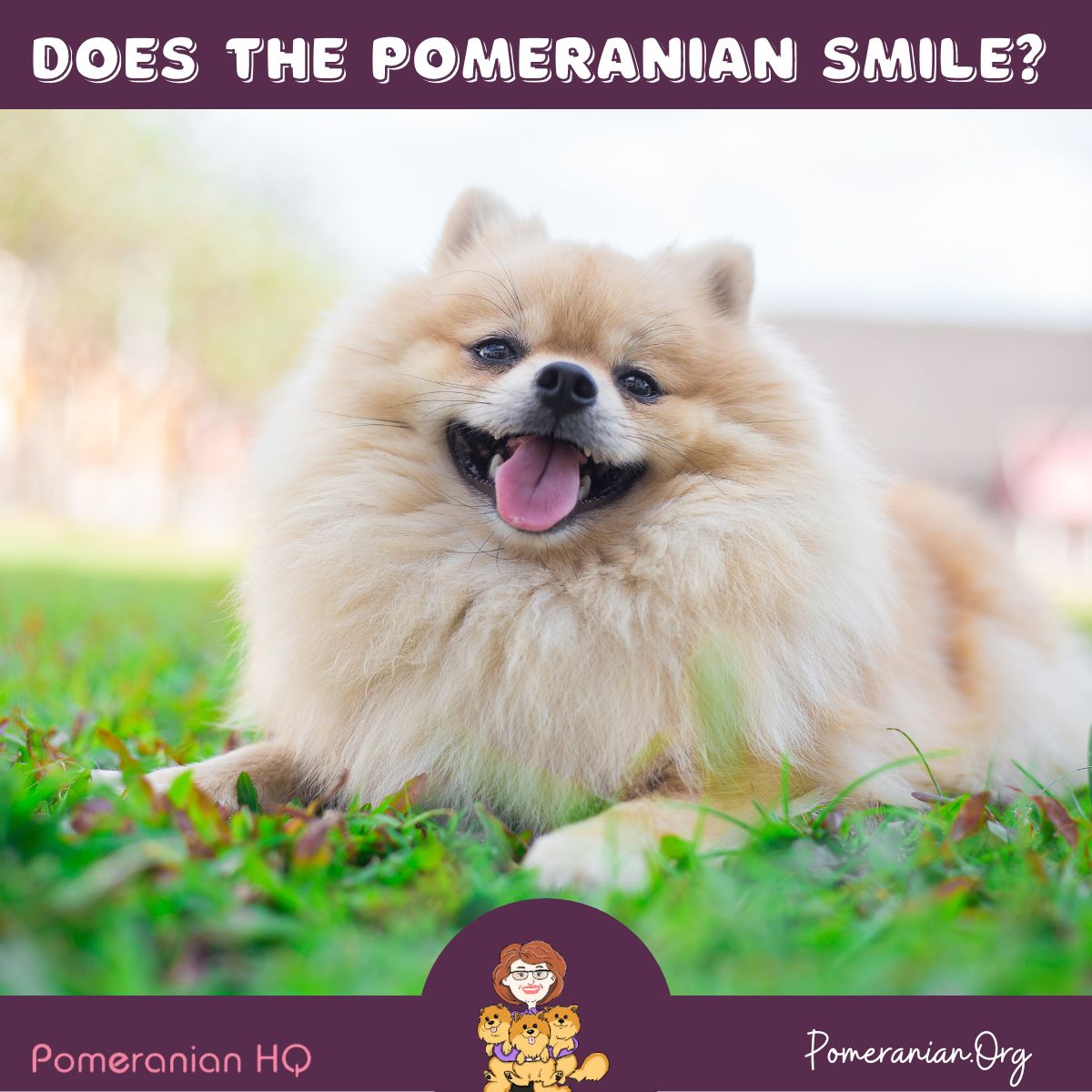
Do Pomeranians Smile?
Social media is full of pictures of Pomeranians appearing to smile, but it seems that dogs can’t smile in the same way as humans. They’re not able to smile in the same situations that a human does like responding to a joke with a smile or laugh
You might be thinking why do Pomeranians smile? Well, Pomeranian facial features are such that they appear more like they’re smiling than other dogs. This “dog smile” usually occurs in situations when Pomeranians are relaxed and appear happy, which is why pet parents think it is a smile.
The fluffy Pomeranians thrive on companionship but they’re more than just lapdogs. Poms are highly intelligent, mastering tricks
with ease, and they often compete in canine sports or work as therapy dogs.
They’re also pocket-sized watchdogs and, at times, prolific alert barkers.
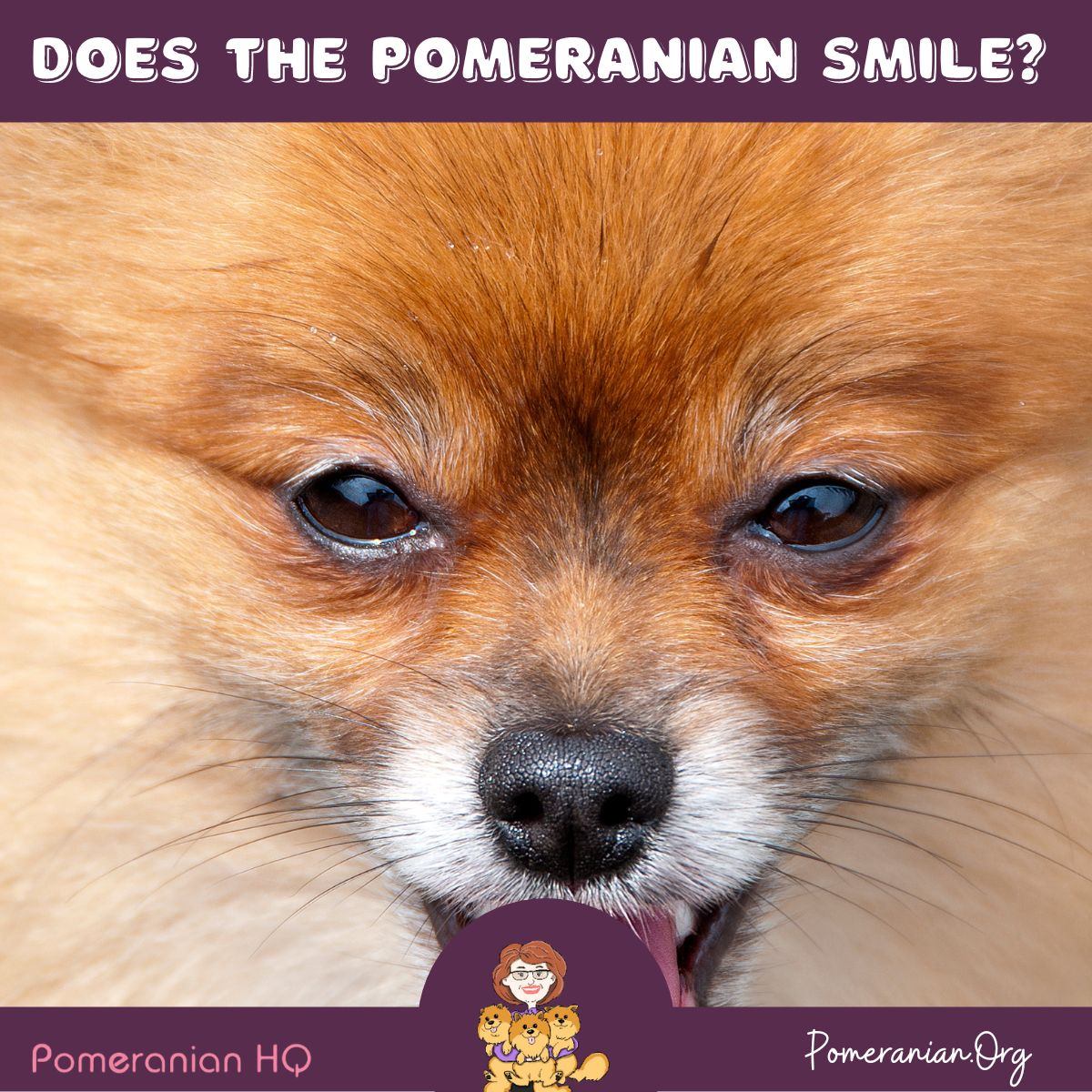
Why do Pomeranians Smile?
Like all dogs, a Pomeranian’s smile is an adaptive facial expression and behavior with a wide range of functions and benefits. Just like humans, the reasons a dog may smile are subjective.
Often, dogs seem to display smiling as a social skill and expression of emotion. Humans reward smiling when we react, laugh, give treats, pet, and clap. Dogs quickly learn there will be a positive reaction so will continue smiling in order to receive positive reinforcement.
It is important to understand that every dog is an individual and responds to varying situations differently. What may cause the smile reaction in one dog may not trigger it in another. Here are some reasons why Pomeranians smile.
- An adaptive facial expression
Many canine experts see a Pomeranian dog smile as an adaptive facial expression. If a dog smiles, it is likely the person will smile back, thus reinforcing the body language.
We make a big fuss about our dogs when they ‘smile’ and perhaps even give them a treat. Dogs quickly learn there will be a positive reaction so will continue giving the smiling expression in order to receive positive reinforcement.
- Neoteny
Neoteny is the retention and preservation of puppy behaviors into adulthood. This means they retain some behaviors from puppyhood in adulthood. This includes body language and emotional greeting behaviors like smiling, licking, jumping, and tail wagging. This is why you find many adult dogs jumping up, licking, and giving adorable smiles.
- The feel relaxed
When dogs are relaxed and content, their eyes will appear soft, they’ll drop their jaws, pull back their lips, and let their tongues lap over their teeth. Because their facial muscles are not tense, their ears will sit in their natural position and will not be pinned back. This wide-mouth pant forms the shape of a grin.
Also, their body language will be casual and they will have a happy waggy tail. You often see this smile after a dog has had a fun play session and has burned off all its tension. Dogs with this smile feel relaxed and comfortable.
- They feel stressed
Some dog smiles reveal more tension. Your dog’s ears will be pulled back against its head and the tension in its facial muscles will be obvious. There could be panting – which is stress-related. Their eyes will be wide open, showing the whites and their head will be pulled back into a tense position and their limbs will be tense and stiff.
- They’re submitting
If your Pom is timid and submissive, they can make a facial expression that looks a bit like a grin. It is an appeasement gesture rather than a sign of happiness and it means they feel uncomfortable. The muscles around their mouth are tense and their lips are drawn back to reveal their teeth. Their whole body is tense, their ears are flat.
It does indicate that the dog is feeling intimidated so be careful how you interact with them if you do not know them well. This grin is often seen in rescue dogs who are desperate to please the humans around them but are feeling nervous.
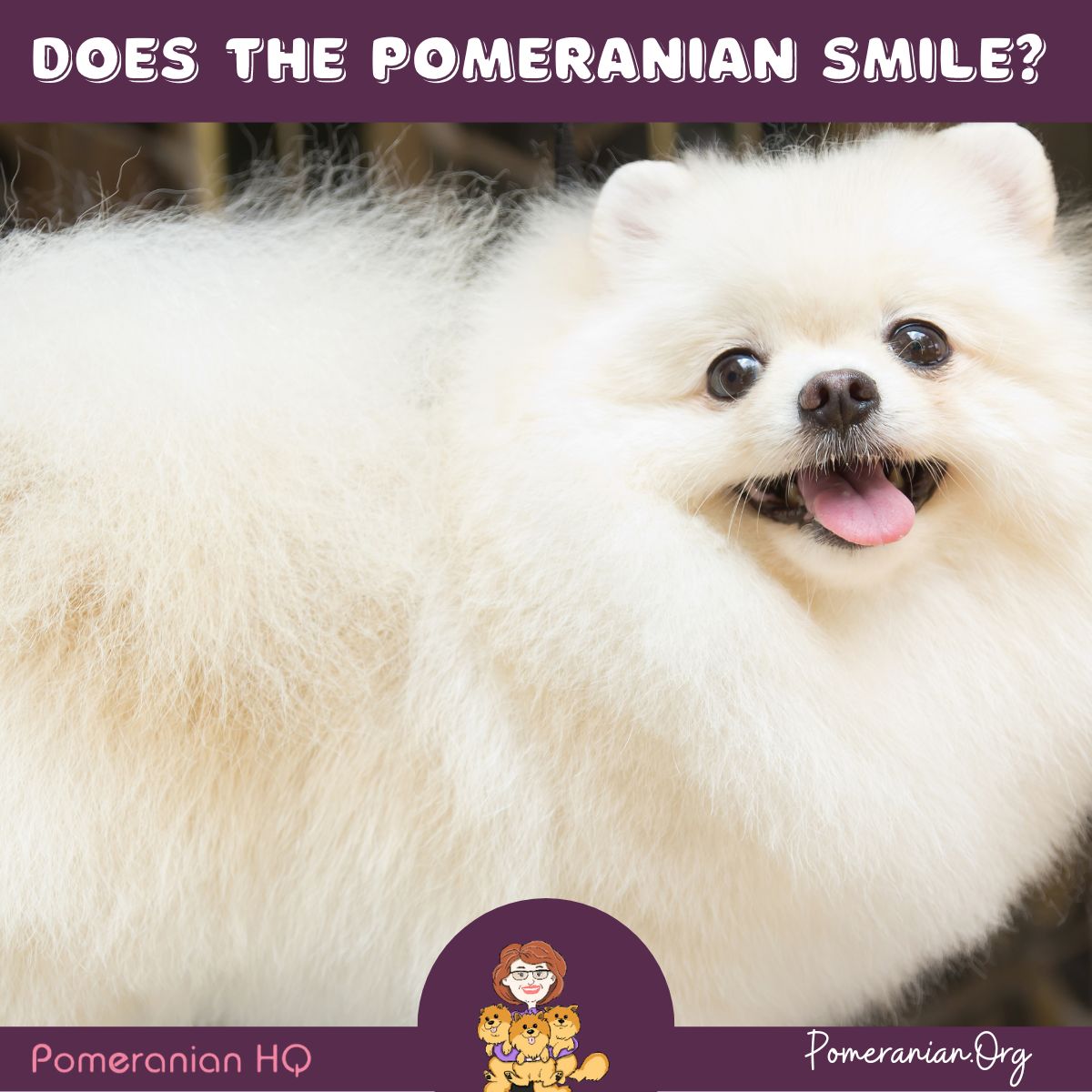
Do Pomeranians Smile When They’re Guilty?
You have probably seen social media videos of Pomeranians that have gotten into something, and when their person finds out, the Pom responds with a grin.
Is this a sign that the Pomeranian actually feels guilty for what they did? Probably not!
Feeling guilty and sorry for doing something ‘naughty’ is not part of canine emotions. There is no evidence that dogs feel remorse or guilt. Grins in response to naughty behavior represent submission rather than aggression nor guilt.
What you probably see in those videos is actually a submissive grin. They have noticed and are aware that you are not happy about something that they did. They probably have no clue what that is but are responding to your emotions to appease you anyway. and use a submissive grin to defuse your aggression and reassure you that they don’t pose a threat.
Warning about the Pomeranian Smile
There’s nothing wrong with being enthusiastic about your Pomeranian’s smile and enjoying it as a way of bonding with your furry companion. However, you should try not to misinterpret your dog’s emotions. This is particularly important when interacting with dogs that you do not know that well.
You may think that their grin is a sign that they’re happy. However, the grim may indicate that they don’t like something and are feeling stressed. Anxiety and stress in dogs can very quickly escalate into aggression and biting.
Don’t be confused with the difference between a smile and an aggressive grin with a dog that’s starting to show its teeth. The overall body language is completely different. An aggressive grin is often accompanied by hard standing on your dog’s back, growling, an aggressive and firm stance, and ears pinned back.
Kids often misinterpret dogs’ emotions and probably that’s why so many dog-biting incidents involve children under 7 years of age. They misinterpret dog smiles as an invitation to cuddle the dog when in fact it means ‘stay away from me!’
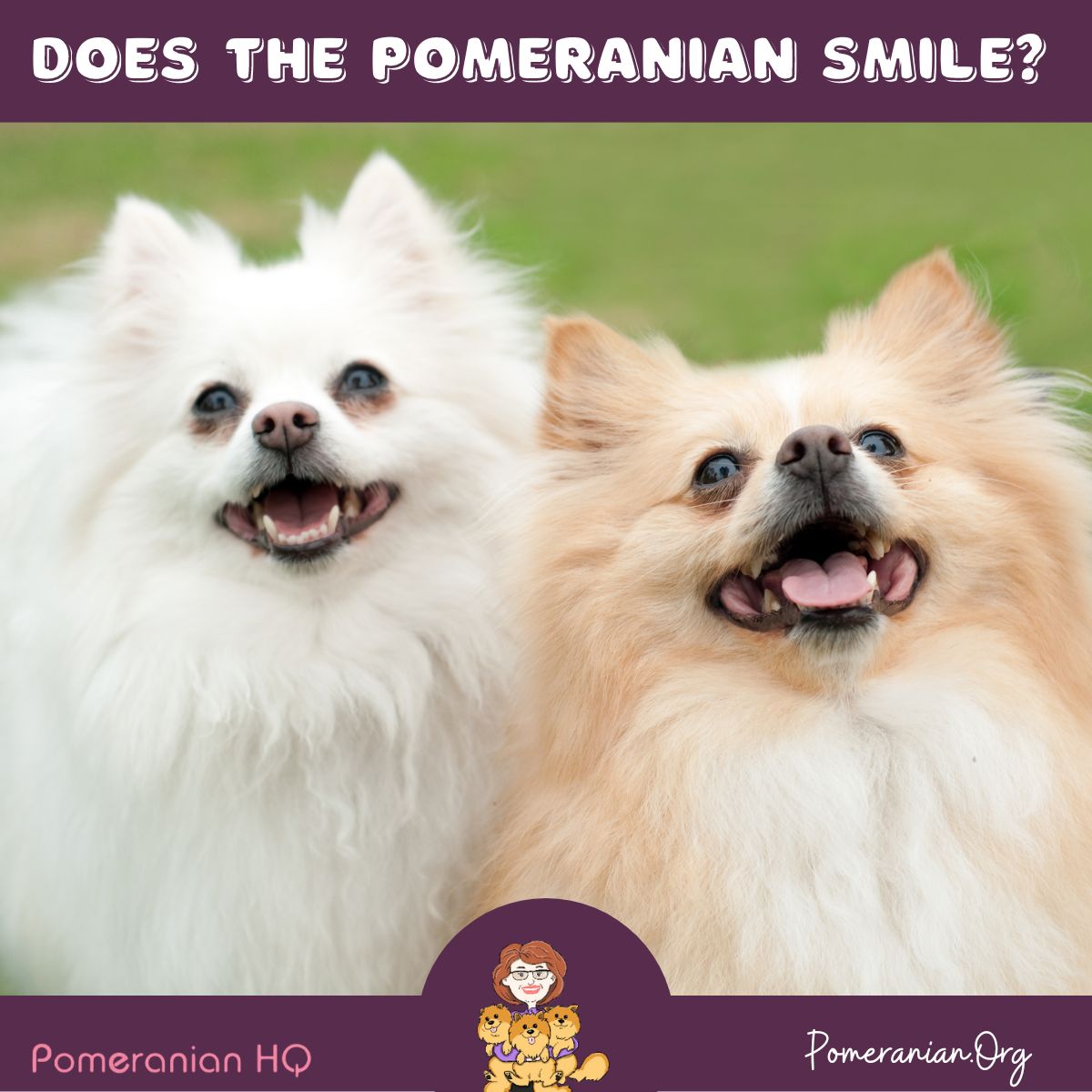
Canine Body Language
Like all dogs, Pomeranians use their entire body to express joy or happiness toward one another and their human companions. They use posture, facial expressions, and other body languages to communicate.
Understanding what your Pomeranian is saying can give you a lot of useful information such as when your dog is happy, fearful, aggressive, or nervous about what is going on. Emotional greeting behaviors, like smiling, licking, jumping, tail wagging, barking, and howling are highly adaptive behaviors in Pomeranians, particularly when they’re young.
Do Pomeranians understand Human Smiles?
Like all dogs, Pomeranians can recognize our facial expressions. When they look at our faces, they’re somehow able to understand just what we are feeling. They can assess our body language to find out if they have pleased us or not. Poms can tell the difference between happy and angry human faces.
When you smile directly at your furry friend, they understand you’re happy and they immediately jump up, wag their tail and then stare right at you. They will be able to tell if their human companions are happy or not and a smile is a part of that.
Do Dogs like it when People Smile?
Most dogs love pleasing their humans and know that smiling is human body language for happiness. The majority of dogs are very good at interpreting human body language. They can tell when we are happy, sad, nervous, or disappointed.
Dogs also know that our pleasure often means extra attention, treats, and playtime for them. So, they love making us happy and also like how we treat them when we’re happy!
Dogs can read the body language that goes along with a human’s smile. They often instinctively understand that smiling is not a human form of aggression, even if the person is a stranger.
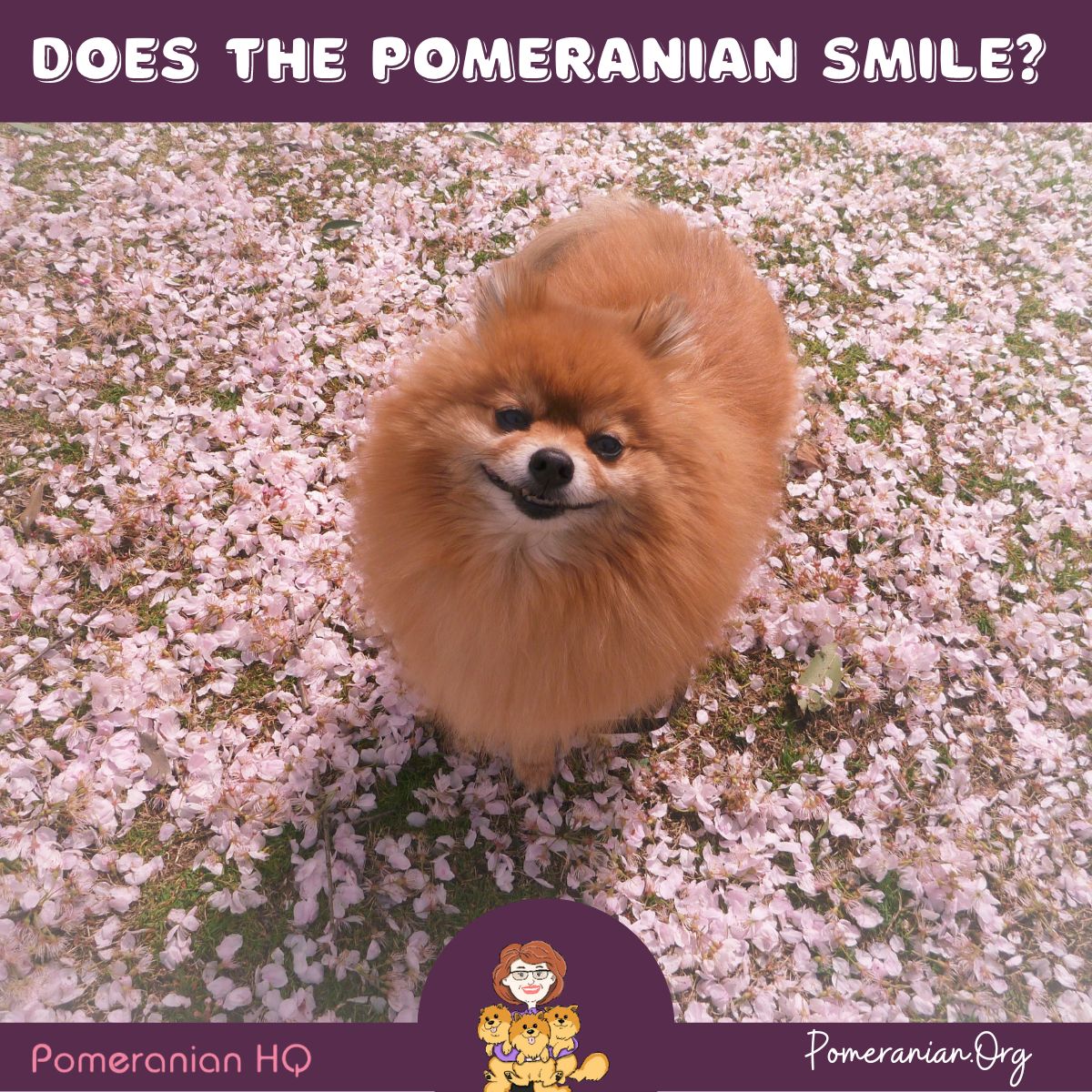
Final Thoughts
Every dog out there is a complex biological individual with unique emotions, intelligence, personality, and experience. Interpreting your Pomeranian’s reaction by focusing only on their facial expression is like reading a sentence while ignoring most of the words. With just your Pomeranian’s smile, you’ll never understand the whole meaning.
For this reason, it is important you pay attention to your Pom’s entire body language before trying to understand how he feels in specific situations. So, instead of focusing on whether your Pomeranian is smiling, it makes more sense to look at the dog’s body language and actions to see if they are happy.
Does your Pomeranian smile? How can you tell that? Please share your experience with us!
Copyright Pomeranian.org. All Rights Reserved.
References and Further Reading:
[1] Official Standard of the Pomeranian (AKC). American Kennel Club, 2011.
[2] English Kennel Club Pomeranian Breed Standard, 2017.
[3] Denise Leo, The Pomeranian Handbook.
[4] Milo G. Denlinger “The Complete Pomeranian.”
[5] Kimbering Pomeranians “1891-1991”.
[6] William Taplin’s “The Sportsman’s Cabinet.”
[7] E. Parker “The Popular Pomeranian.”
[8] Lilla Ives “Show Pomeranians.”







